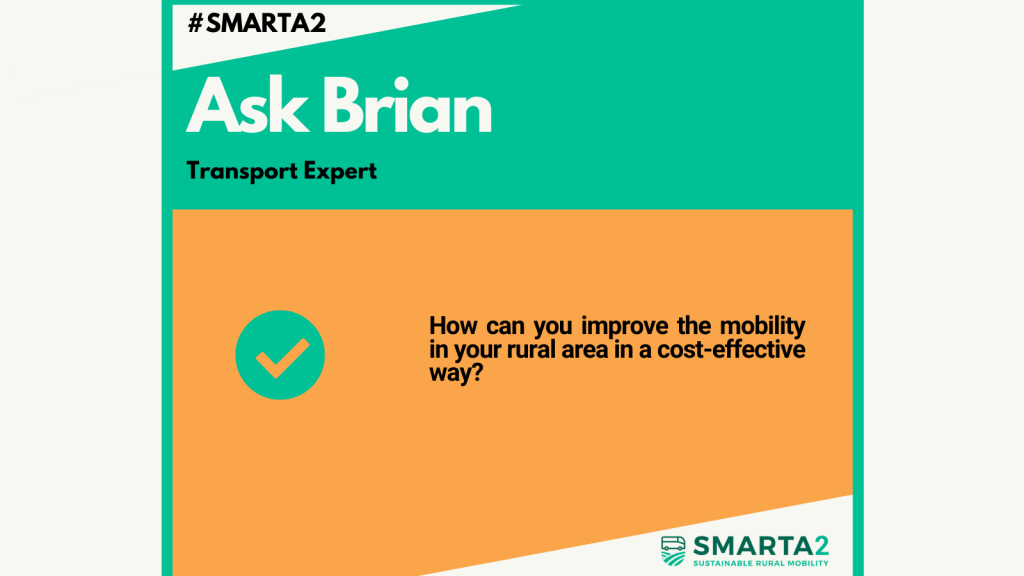
Ask Brian: How Can You Improve Mobility in Your Rural Area in a Cost-Effective Way?

Public transport can rarely be profitable in rural areas. However, this does not mean that rural communities cannot find cost-effective solutions to their mobility problems. Once they identify their needs, rural communities can consider various options including:
To provide a service that is sustainable when there is low demand, rural areas should consider the use of existing resources, to minimise the costs. For instance, in most rural areas, there is a school bus, picking up children to and from schools. In the in-between period, i.e. for most of the day, the school bus is not in use. In many rural areas across Europe, this gap is seen as an opportunity to use the school bus to help the tourist sector. For example, hillwalkers and tourists in rural areas without access to a car are more than willing to pay to have rucksacks taken from one destination to another for a price that helps cross-subsidize the overall cost of providing services in the area.  Similarly, a school bus or other available vehicles that are underutilised can be put into use to help people in rural areas to access shopping, training, employment, health, and leisure.
It may be necessary to provide “hubs†where passengers can connect with existing, rail, bus, coach services using car/ride-sharing, bike, and walking for the first and the last mile.  Communities can discuss and decide with stakeholders where these can be located. These hubs must provide safe, reliable, comfort, and information to make the whole process attractive.  Most essential services such as health, education, training, employment, leisure, and retail will be based in surrounding towns and cities. Integrated ticketing and journey planning both pre, during and post-trip are worthy of consideration to build confidence for users.
Carsharing can be an attractive option. This requires trust between residents, visitors, and stakeholders.  How do you build trust? Easy to say, difficult to achieve.
What brings people together? Common interests are a good start. If people share hobbies, interests etc., they will be more inclined to trust and share time and resources. Angus Transport Forum in Scotland adopted this approach almost 20 years ago through the creation of their Rural Transport Clubs. Travel clubs were designed to bring people with common interests together to carshare and use DRT services. By identifying peoples’ hobbies (over 40 in total), A-Z, from aerobics and yoga, people were more willing to share their car. This idea benefited the whole community.
 Finally, at least in the initial stages of setting up a shared mobility scheme, does not need a huge investment in infrastructure. Most rural areas will have a village hall or a church or a farm that has facilities that are underutilised.  Most are always looking for extra income and would likely be willing to help the community. These places can be adapted and provide a cost-effective facility to provide an e-carsharing or e-bike station. Ideally, it is also beneficial to have some ITS system to assist manage bookings and administrative issues. High-speed broadband can be an issue in rural areas. Landlines may be expensive. Rural communities can also investigate other options, such as satellite internet or DSL. Contact your local authority or EU Leader office to find out what help could be provided. Therefore, infrastructure does not have to be expensive in the first place. All it takes is engaging with the local community, promoting multi-stakeholder dialogue, using existing resources, and last, but not least, be inventive!
Interested in good practices in rural mobility and the latest developments on rural mobility?